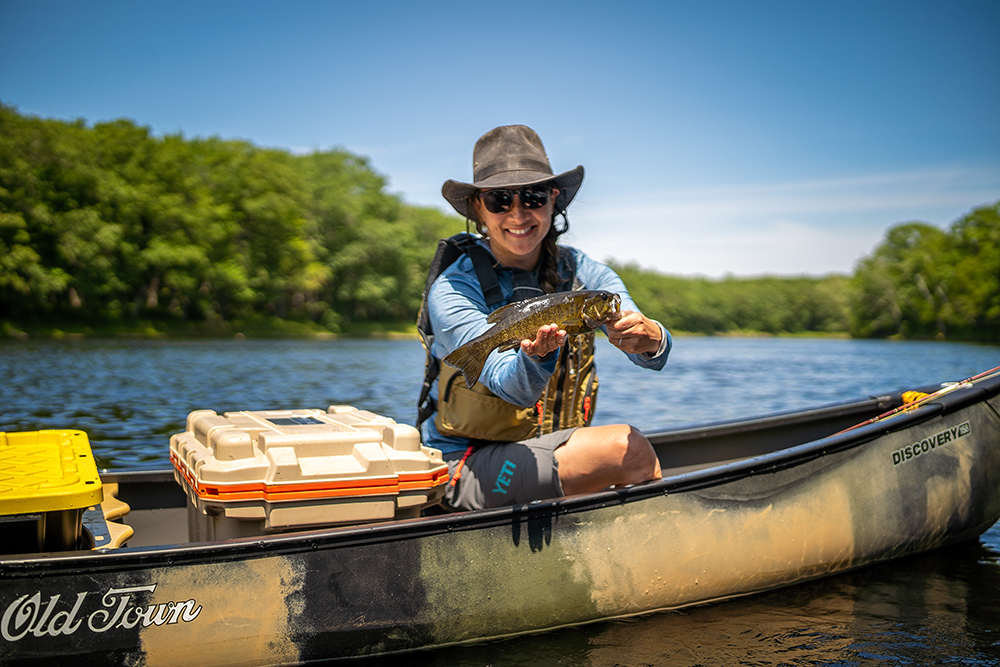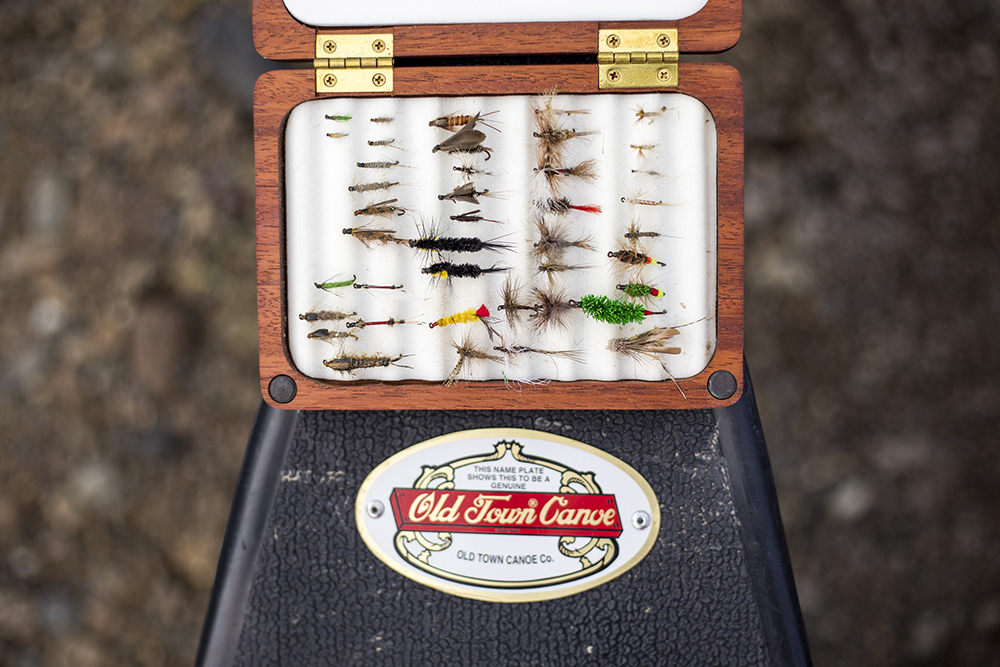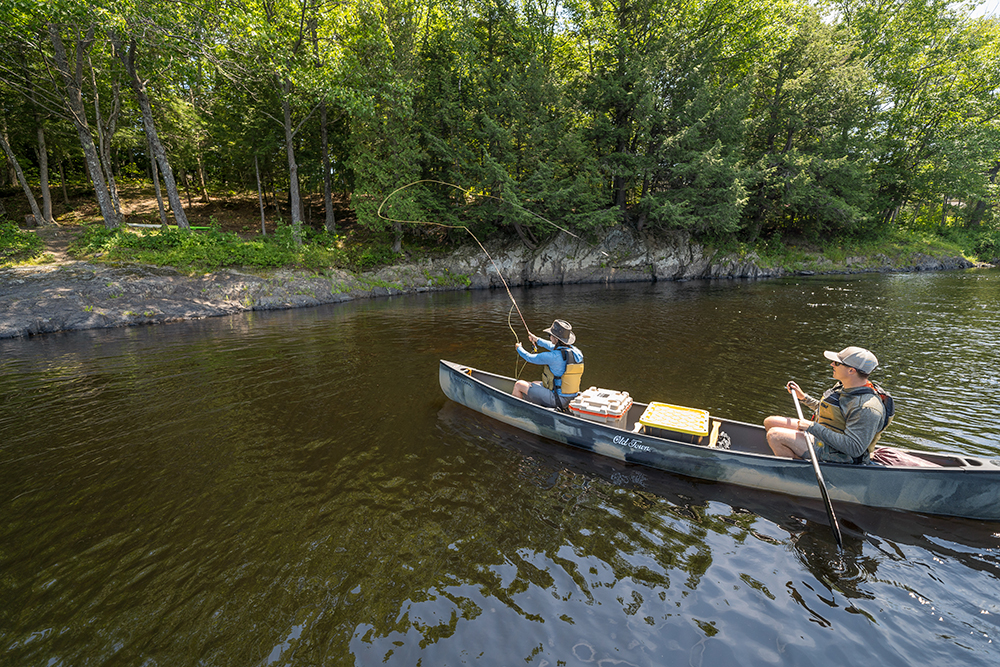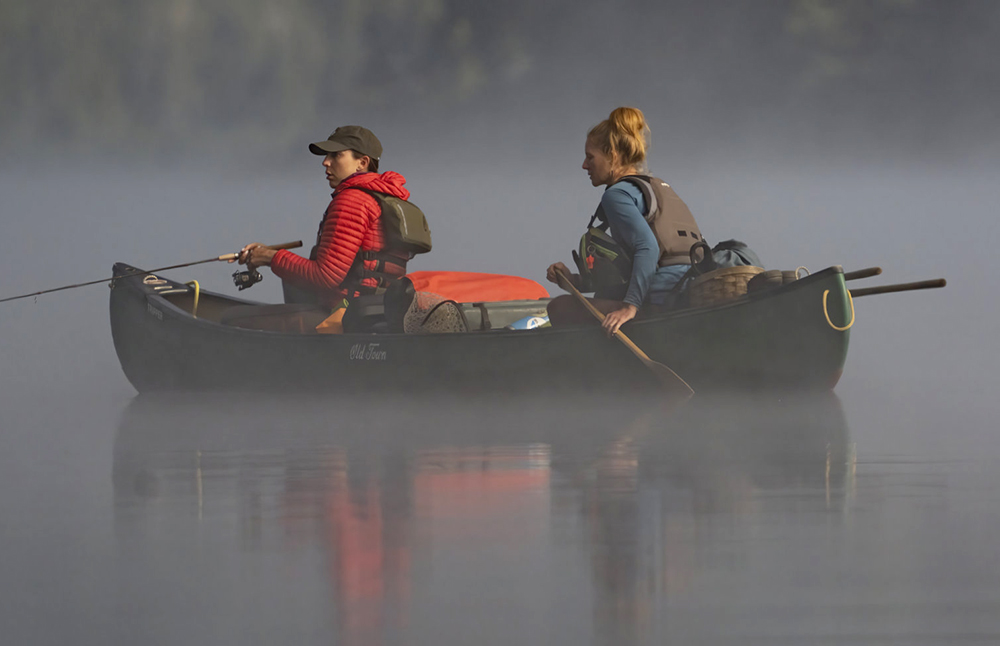Guide: Fishing on a Canoe Camping Trip
By: Christi Holmes, Ambassador
Freshly caught fish is best enjoyed over a campfire, so next time you go canoe camping, don’t forget your fishing rod. For everything you need to know about canoe camping in general, check out our helpful guide, but read on for tips to up your fishing game on your next trip.

FISHING GEAR FOR CANOE TRIPS
A huge advantage of canoe camping is that you get to pack quite a bit of gear, especially with canoes like the Old Town Discovery 169 or Penobscot 174. Somehow, the spaces still fill up quickly, especially with two people, tents, sleeping bags, cooking gear, etc. So, when packing fishing equipment, keep it simple and pack light.
I’m a huge fan of four-piece rods for both fly fishing and spinning rods. They pack up nicely for traveling to and from the river, and during long portaging. Packed in a case, there are no hooks to accidentally grab and no long rods to get broken. Aside from your basic fishing gear like forceps and measuring tape, a net with a long handle is very handy for fishing from a canoe. Fight the urge to bring your entire tackle box or multiple fly boxes and pack a couple of favorites. Don’t forget a bug net- when the fish are biting, the bugs usually are, too!

PRE-TRIP PLANNING TIPS FOR CANOE FISHING
When planning your trip, consider the time of year and the group you’re going with. Is fishing a priority for your canoe partner? The entire group? Or is camping and enjoying nature the priority? The best fishing is in the spring here in Maine, but the weather is usually chilly, and the black flies are horrendous which can make the actual camping portion miserable. It’s best if everyone in the group is prepared and on the same page with expectations regarding canoeing vs fishing.
Before your trip, study your route. Look for inlets that feed into the river, that bring fresh food to waiting fish. Scan for any rapids or dams that fish will hold up beneath. Ask locals or friends who are familiar with the water if there are particularly fishy sections.
Know the regulations of the waterway. Some stretches of a river may be fly fishing only with a certain size and bag limit, while another stretch may allow worms and have different limits.

ON THE WATER
Since fish are most active at dawn and dusk, try to camp near good fishing spots, and fish while at camp.
Keep your rod rigged and close by in your watercraft, in case you see fish rising.
In a fast-flowing current, take turns fishing with your canoe partner. While one of you casts, the other holds the boat in place or paddles the canoe around to try different areas.
If your trip includes deep, calmer water like a pond, you can try trolling a line or two. You’re still making forward progress so there’s no harm in throwing a line out. Sinking fly line works great for trolling.
In those calmer waters, you and your canoe partner can both fish. If you both fly fish and are both right-handed (or both left-handed), have the bow paddler turn around and face you. This gives the bow angler more room on their back cast.
I hope these tips help you catch more fish on your next canoe camping adventure!







